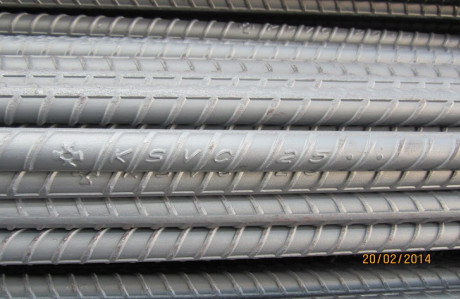Kyoei Steel has its mettle tested by foreign imports
 |
| illustration photo |
According to a ministry source, the Ministry of Industry and Trade (MoIT) might cut the high-quality steel project from its new master steel plan to 2020 with vision to 2030, which is currently being drafted, as the project has only moved at a snail’s pace since 2012.
The source, who declined to be named, added that Kyoei Steel blamed its delays on market oversupply, which made it difficult to sell its output.
The project, with a capacity of 500,000 tonnes, held its groundbreaking ceremony in March 2012 and was expected to operate commercially from 2015, becoming the second-largest steel project in Vietnam’s northern region after the Thai Nguyen steel project. Its capacity might rise to about one million tonnes of steel bar products later on.
Kyoei Steel officially entered Vietnam in 1994 as Vina Kyoei Steel, established as a joint venture company between Kyoei Steel, Mitsui & Co. and Itochu Corporation (Japan), and Vietnam Steel Corporation. Its factory is located in the Phu My Industrial Zone in Ba Ria-Vung Tau province.
Last year it began an extension project in Ba Ria-Vung Tau with a total investment of $220 million, and an annual design capacity of 500,000 metric tonnes of billet, and 500,000 metric tonnes of finished product.
The MoIT predicted that the steel firms in Vietnam will see their overall manufacturing output increase to 35.3 million tonnes per year in the next five years, while demand will be around 15 million tonnes.
In early March, the MoIT announced a decision to issue temporary safeguard duties of 23.3 per cent on steel billets and 14.2 per cent on steel bars for a maximum of 200 days, as it noted that the recent surge in imports has caused “serious damage” to the local production of steel billets and rods. This is down to the fact that imported steel billets have undercut local products since 2014, especially since the price of imports dropped by 30 per cent last year.
However, Kyoei Steel protested the safeguard duties, saying that the firm has demand for imports.
The MoIT previously stated that Vietnam’s current production of these items could satisfy domestic demands.
What the stars mean:
★ Poor ★ ★ Promising ★★★ Good ★★★★ Very good ★★★★★ Exceptional
Latest News
More News
- Global partnerships key to Vietnam’s IFC development (December 26, 2025 | 16:18)
- Vingroup pulls out of bid to invest in North-South high-speed railway (December 26, 2025 | 11:42)
- Strengthening supply chains through trade promotions and customs reform (December 24, 2025 | 14:00)
- PM orders investment model for North–South high-speed rail (December 22, 2025 | 17:43)
- LS Eco Energy to invest in Vietnam rare earth sector (December 22, 2025 | 17:31)
- Government moves to establish International Financial Centre (December 21, 2025 | 21:00)
- Vietnam's IFC to target global investment flows (December 21, 2025 | 18:00)
- Two national hospitals expand capacity with new facilities (December 20, 2025 | 09:00)
- Ha Tinh breaks ground on major Vingroup industrial and energy projects (December 19, 2025 | 18:24)
- EVN launches major power infrastructure projects nationwide (December 19, 2025 | 18:17)

















 Mobile Version
Mobile Version